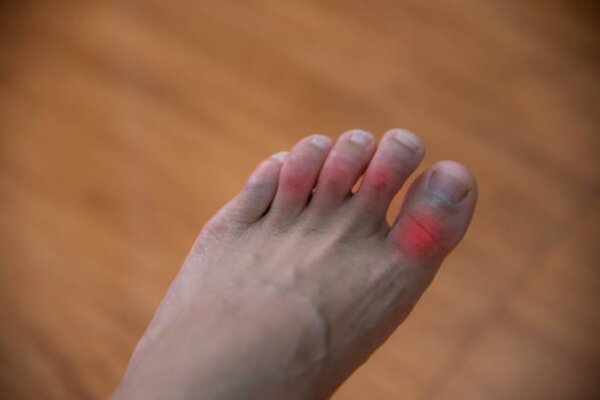Ever wondered why your heel suddenly starts to throb? Could uric acid be the unseen culprit behind that nagging heel pain? It’s a question that intrigues many and might just hold the key to unlocking relief and mobility. This deep dive into the relationship between uric acid and heel pain strips away the complexities, offering clear, credible insights. With concise, fluff-free content, we’re here to guide you through the science and solutions, turning confusion into clarity. Ready to step away from the pain and towards understanding? Let’s unravel the mystery together.
Is Heel Pain Due To Uric Acid: A Prelude to Heel Pain

Uric acid, a byproduct of purine metabolism, finds itself at the center of our investigation. Normally processed by the kidneys and expelled through urine, its excessive accumulation in the body can lead to various health complications, one of which might be heel pain. But how does this chemical compound, seemingly unrelated to the musculoskeletal system, become implicated in the discomfort we experience in our heels?
The Science Behind Uric Acid and Joint Pain
The journey begins with understanding that uric acid, when overproduced or insufficiently excreted, crystallizes and deposits in joints and tissues, potentially leading to gout. Gout, a form of arthritis, commonly affects the feet, particularly the big toe, but can it also be the source of heel pain? This section explores the biochemical pathways that might link elevated uric acid levels to pain in the heel, shedding light on the inflammatory processes that could extend beyond the common sites of gout.
Distinguishing Heel Pain Causes: Beyond Uric Acid
While uric acid buildup presents a plausible explanation, heel pain is a symptom with a plethora of potential causes. This segment delves into other conditions such as plantar fasciitis, Achilles tendinitis, and heel spurs, contrasting their symptoms and treatment options with those associated with uric acid-related discomfort. Understanding the distinct characteristics of each condition is crucial for accurate diagnosis and effective management.
The Role of Diet in Managing Uric Acid Levels
Diet plays a pivotal role in regulating uric acid levels, thereby influencing the risk of developing related heel pain. This part of our exploration provides practical advice on dietary adjustments that can help manage uric acid levels. Emphasizing foods to embrace and those to avoid, it guides readers towards a nutritional strategy that not only targets uric acid but also enhances overall well-being.
Innovative Treatment Approaches for Uric Acid-Induced Heel Pain
Advancements in medical science offer new hope for those suffering from heel pain potentially caused by uric acid. This section introduces the latest treatment modalities, including medication, lifestyle modifications, and possibly cutting-edge therapies that target uric acid crystallization directly. Highlighting the importance of personalized treatment plans, it underscores the advancements in medical research aimed at providing relief to sufferers.
Preventive Measures to Keep Uric Acid in Check
Prevention is better than cure, especially when it comes to managing uric acid levels and preventing heel pain. This final segment offers actionable tips on preventive strategies, encompassing diet, exercise, hydration, and regular health check-ups. By adopting a proactive approach to health maintenance, individuals can significantly reduce the risk of uric acid-related complications.
Conclusion
while uric acid’s link to heel pain is a complex interplay of factors, understanding this connection is the first step towards effective management and prevention. Through informed lifestyle choices and the guidance of healthcare professionals, it is possible to stride forward without the shadow of pain looming over our steps. Let us embark on this journey of awareness and action, embracing the knowledge that empowers us to navigate the challenges of heel pain with confidence and grace.

